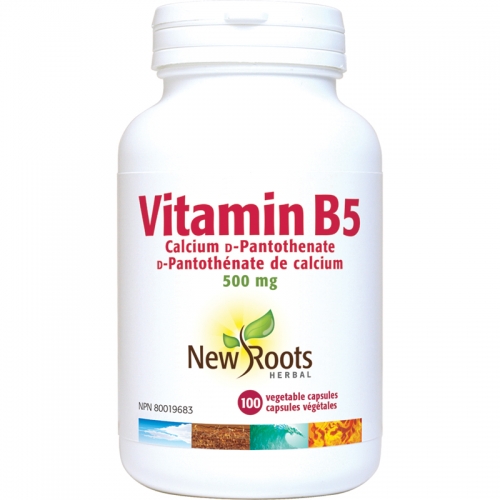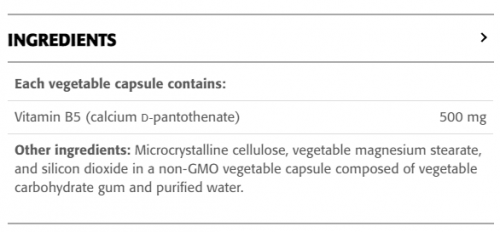Brand: New Roots Herbal
Vitamin B5 Calcium ᴅ‑Pantothenate - New Roots Herbal
DESCRIPTION
Vitamin B5 (pantothenic acid) is needed to form coenzyme-A (CoA), and is critical in the metabolism and synthesis of carbohydrates, proteins, and fats. The vitamin also assists in tissue formation.
Vitamin B5 or pantothenic acid is a water-soluble, B-complex vitamin. Vitamin B5 was discovered and named in 1939, when it was isolated from rice husks. Vitamin B5 is named for the Greek word pantothen, meaning “from everywhere”; pantothenic acid is found more or less everywhere, from plants and animals to humans. Natural sources of vitamin B5 include eggs, meats, whole grains, and nuts. Vitamin B5 is used by our bodies to release energy from the foods we eat. Vitamin B5 also plays a role in tissue generation, in the creation of antibodies, and in the healing process.
Vitamin B5 plays an important role in the secretion of hormones such as cortisone, because of the role it plays in supporting the adrenal gland. These hormones assist the metabolism, help to fight allergies, and are beneficial in the maintenance of healthy skin, muscles, and nerves.
Pantothenic acid is also used in the release of energy as well as the metabolism of fat, protein, and carbohydrates. It is used in the creation of lipids, neuro transmitters, steroid hormones, and hemoglobin. Pantothenic acid is also helpful to fight wrinkles as well as graying of the hair.
When vitamin B5 is in short supply, symptoms like fatigue, headaches, nausea, tingling in the hands, depression, personality changes, and cardiac instability are reported.
Frequent infection; fatigue; abdominal pains; sleep disturbances; and neurological disorders including numbness, paresthesia (abnormal sensation such as “burning feet” syndrome), muscle weakness, and cramps are also possible indications that this nutrient is in short supply.
Biochemical changes include increased insulin sensitivity, lowered blood cholesterol, decreased serum potassium, and failure of adrenocorticotropin to induce eosinopenia.
Nutritionists categorize vitamins by the materials that they dissolve in. There are two categories: water-soluble and fat-soluble vitamins. Water-soluble vitamins, which include the B-complex group and vitamin C, travel through the bloodstream. Whatever water-soluble vitamins are not used by the body are eliminated in urine, which means you need a continuous supply of them in your food.
DIRECTIONS OF USE
Adults and children ≥ 6 years old: Take 1 capsule daily with a meal or as directed by your health-care practitioner.
WARNINGS
Contains no: Gluten, soy, wheat, corn, eggs, dairy, yeast, citrus, preservatives, artificial flavour or colour, starch, or sugar.
Keep out of reach of children.






